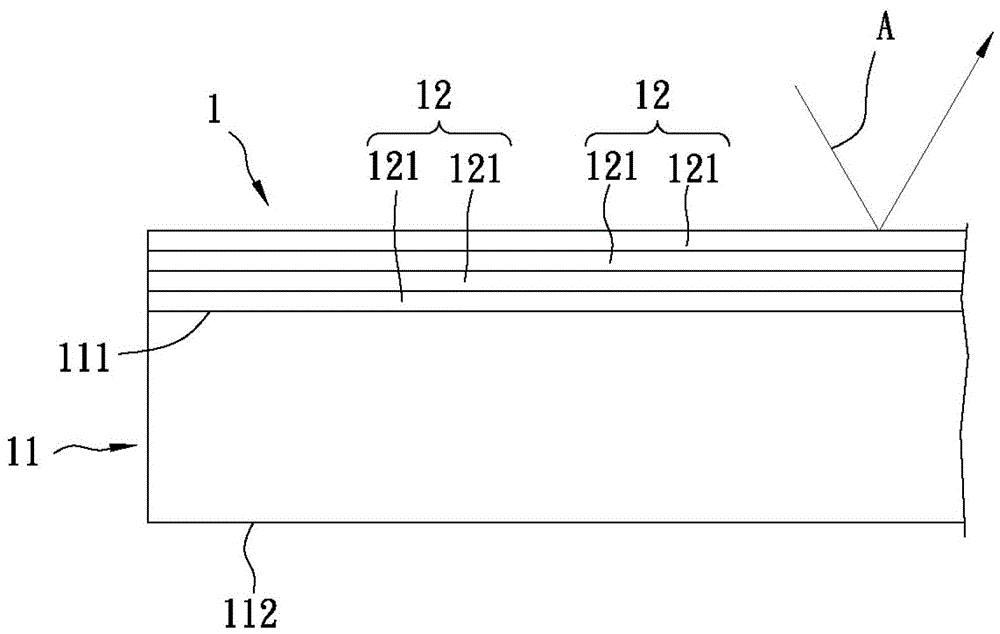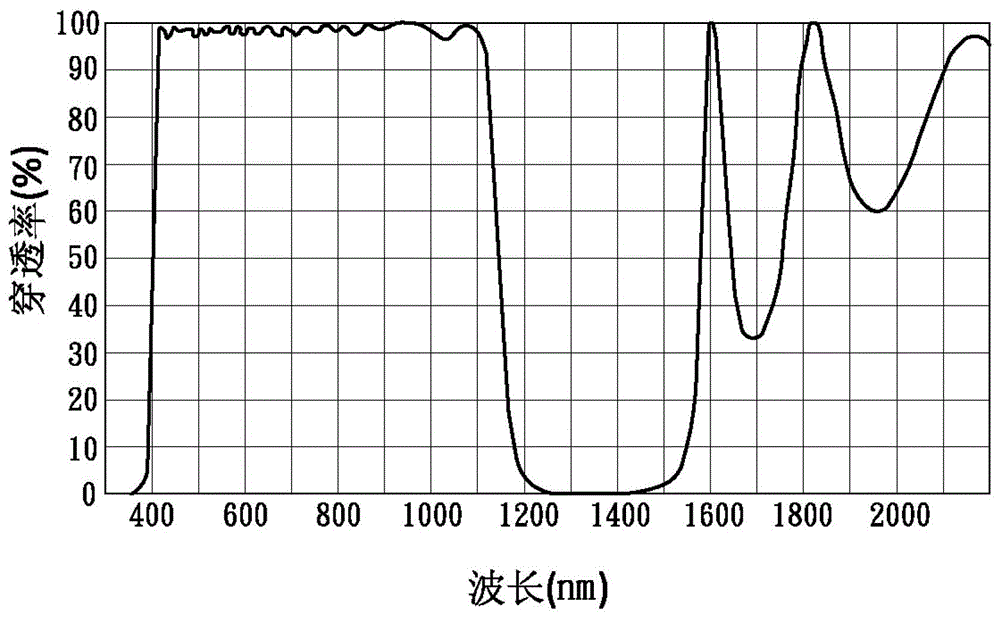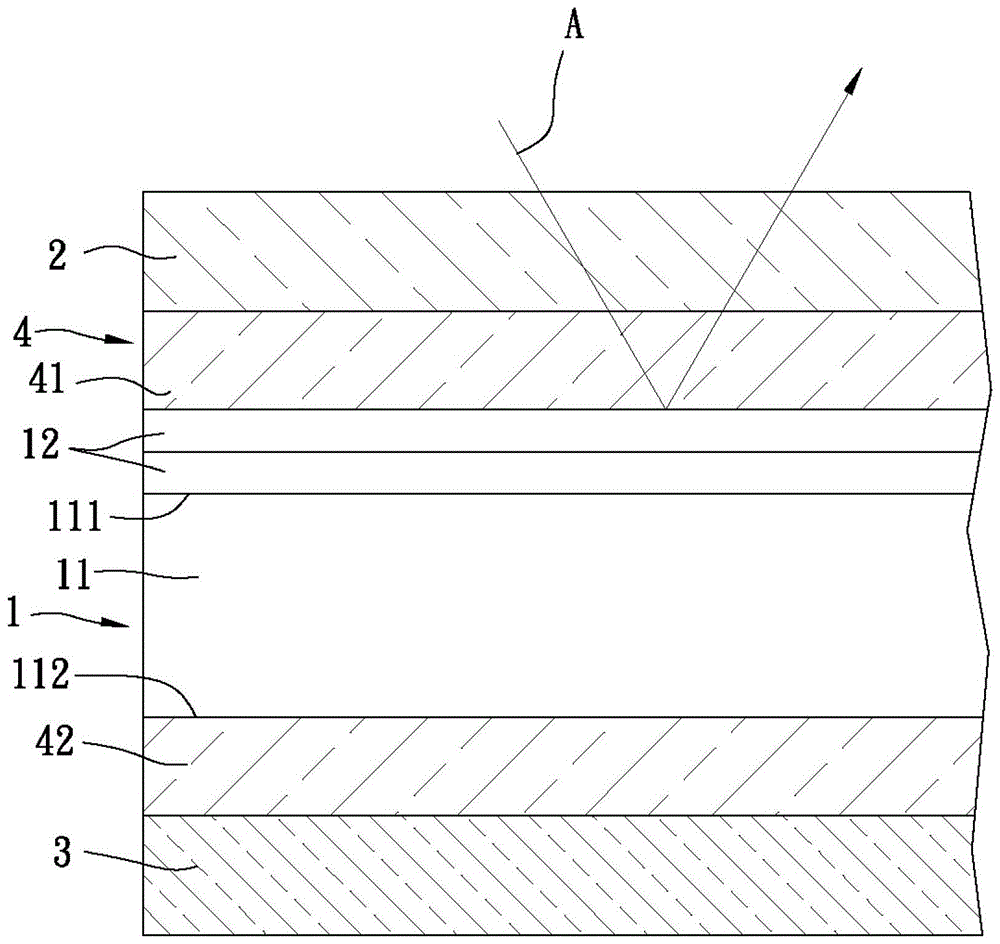Solar cells and their modules
A solar cell and module technology, applied in circuits, photovoltaic power generation, electrical components, etc., can solve problems that affect battery performance and stability, reduce battery life, and film layer decay, so as to maintain battery performance and stability and prevent The effect of overheating the battery and improving the conversion efficiency
- Summary
- Abstract
- Description
- Claims
- Application Information
AI Technical Summary
Problems solved by technology
Method used
Image
Examples
Embodiment Construction
[0022] The present invention will be described in detail below with reference to the accompanying drawings and embodiments. It should be noted that, in the following description, similar elements are represented by the same numbers.
[0023] see figure 1 , the first preferred embodiment of the solar cell 1 of the present invention includes: a photoelectric conversion unit 11 and a plurality of first reflective films 12 that can transmit light.
[0024] The photoelectric conversion unit 11 includes a first surface 111 for receiving light and a second surface 112 opposite to the first surface 111 . In a cell with light incident on one side, the first side 111 and the second side 112 correspond to the front and back of the cell. In fact, the photoelectric conversion unit 11 includes a substrate, an emitter layer formed at the surface of the substrate and forming a p-n junction with the substrate, and an anti-reflection layer (eg SiN x ) and other film layers. Since the specifi...
PUM
 Login to View More
Login to View More Abstract
Description
Claims
Application Information
 Login to View More
Login to View More - Generate Ideas
- Intellectual Property
- Life Sciences
- Materials
- Tech Scout
- Unparalleled Data Quality
- Higher Quality Content
- 60% Fewer Hallucinations
Browse by: Latest US Patents, China's latest patents, Technical Efficacy Thesaurus, Application Domain, Technology Topic, Popular Technical Reports.
© 2025 PatSnap. All rights reserved.Legal|Privacy policy|Modern Slavery Act Transparency Statement|Sitemap|About US| Contact US: help@patsnap.com



